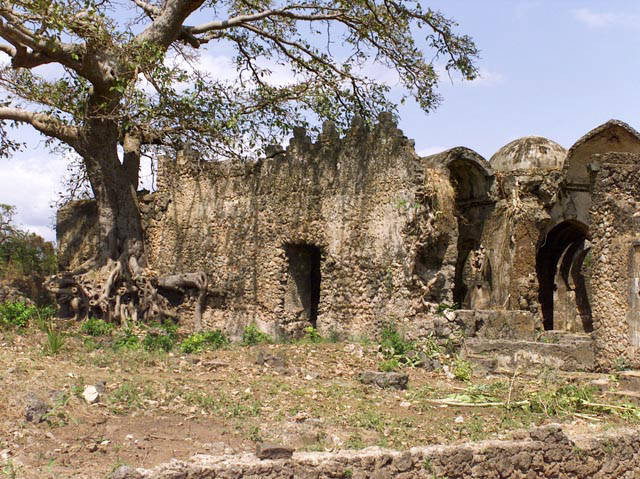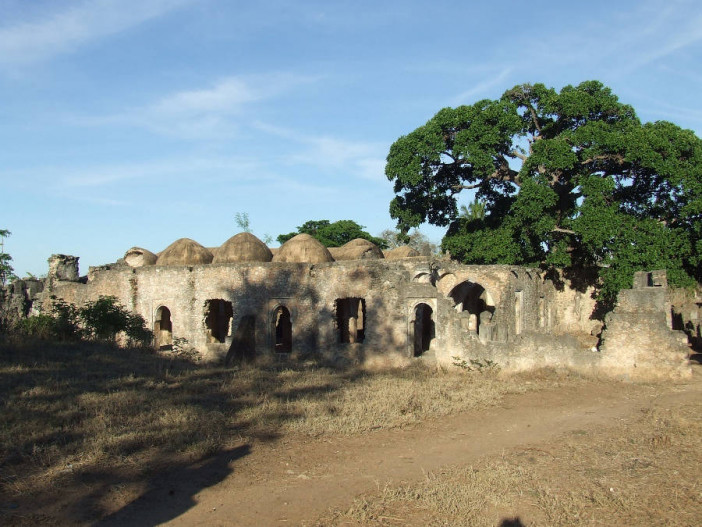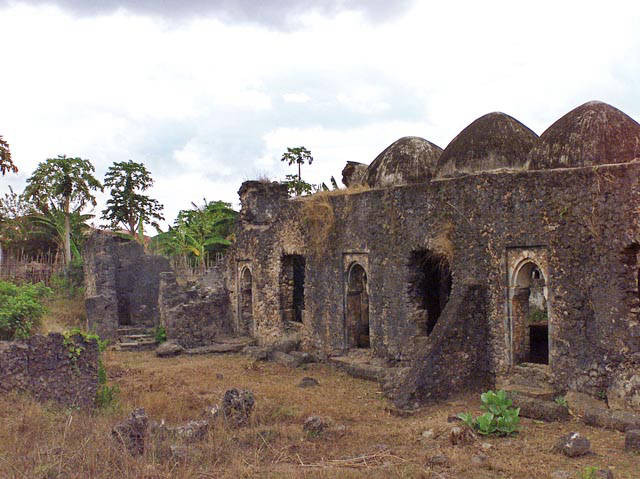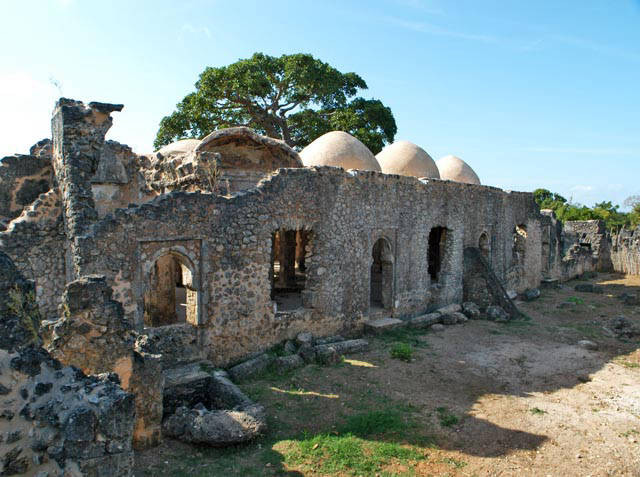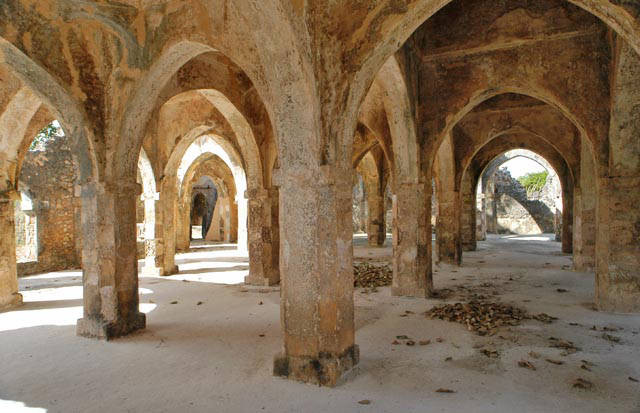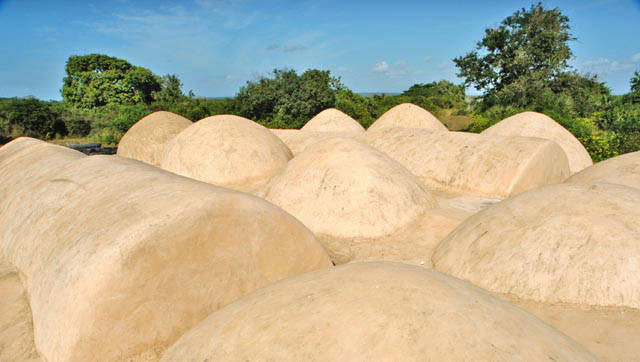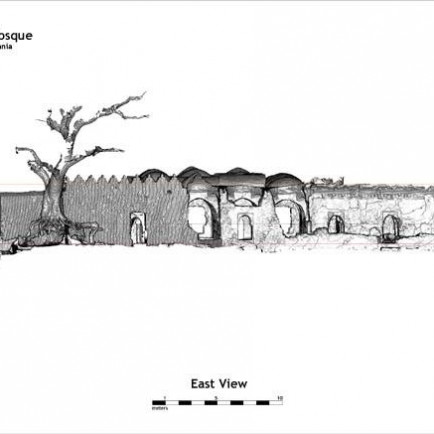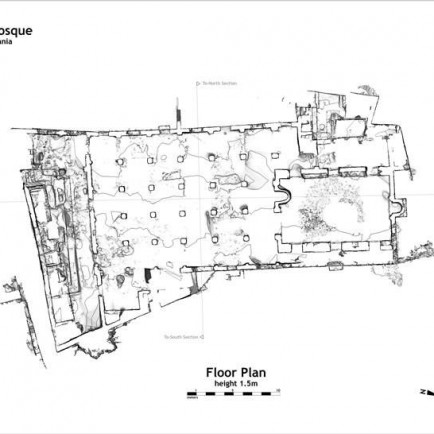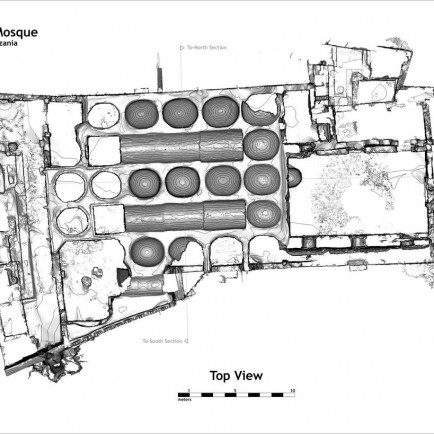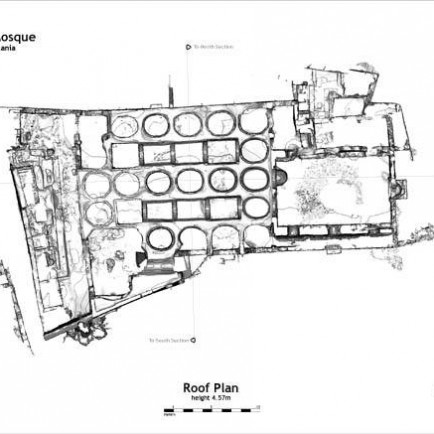Great Mosque of Kilwa
History
On the island of Kilwa Kisiwani, in Kilwa Masoko, in the Kilwa District, in the Lindi Region of Tanzania, lies the congregational mosque known as The Great Mosque of Kilwa. The two main construction phases date to the eleventh or twelfth and thirteenth centuries, respectively, even though it was probably founded in the ninth century. It is among the first mosques to be built without a courtyard and one of the oldest mosques still standing on the Swahili coast.
Urban and Architectural
The 11th or 12th century saw the construction of the smaller northern prayer hall, which was part of the initial phase. A total of nine pillars, initially cut from coral but later covered in wood, supported a total of 16 bays. The building, which was totally roofed, was possibly one of the earliest mosques to be constructed from the ground up without a courtyard. In the 13th century, side pilasters, timber, and transverse beams were added. The 11th or 12th century saw the construction of the smaller northern prayer hall, which was part of the initial phase.
Description
A total of nine pillars, initially cut from coral but later covered in wood, supported a total of 16 bays. The building, which was totally covered in roofs, was possibly one of the earliest mosques to be constructed from the ground up without a courtyard. In the 13th century, side pilasters, timber, and transverse beams were added.
Details
Location
Kilwa Kisiwani, Tanzania
Worshippers
400
Owners
Sultan Ali Ibn Al-Hasan
Year of Build
1170
Area
800
Drawings
Map
History
On the island of Kilwa Kisiwani, in Kilwa Masoko, in the Kilwa District, in the Lindi Region of Tanzania, lies the congregational mosque known as The Great Mosque of Kilwa. The two main construction phases date to the eleventh or twelfth and thirteenth centuries, respectively, even though it was probably founded in the ninth century. It is among the first mosques to be built without a courtyard and one of the oldest mosques still standing on the Swahili coast.
Urban and Architectural
The 11th or 12th century saw the construction of the smaller northern prayer hall, which was part of the initial phase. A total of nine pillars, initially cut from coral but later covered in wood, supported a total of 16 bays. The building, which was totally roofed, was possibly one of the earliest mosques to be constructed from the ground up without a courtyard. In the 13th century, side pilasters, timber, and transverse beams were added. The 11th or 12th century saw the construction of the smaller northern prayer hall, which was part of the initial phase.
Description
A total of nine pillars, initially cut from coral but later covered in wood, supported a total of 16 bays. The building, which was totally covered in roofs, was possibly one of the earliest mosques to be constructed from the ground up without a courtyard. In the 13th century, side pilasters, timber, and transverse beams were added.


